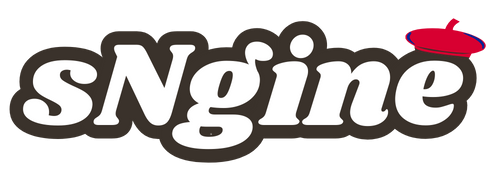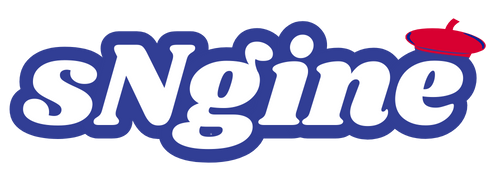The Personal Protective Equipment Market Size has grown exponentially over the last decade due to a surge in industrial activities and heightened safety regulations. This market includes a wide range of products, such as gloves, helmets, goggles, and protective clothing, which cater to industries like construction, oil and gas, and healthcare. The increasing demand for high-quality, durable, and specialized PPE has directly contributed to market expansion, reflecting both the economic potential and social importance of workplace safety solutions.
The Personal Protective Equipment (PPE) Market has emerged as a cornerstone of workplace safety across industries worldwide. With increasing awareness about occupational hazards, organizations are prioritizing the health and well-being of their employees by investing in high-quality protective gear. PPE encompasses a wide range of products, including helmets, gloves, safety glasses, respiratory masks, protective clothing, and more, designed to protect workers from injuries, chemical exposures, and environmental hazards. The market for personal protective equipment has witnessed steady growth due to regulatory enforcement, industrial expansion, and the ongoing emphasis on employee safety. Companies operating in sectors such as construction, manufacturing, healthcare, and chemical processing are actively driving the demand for PPE, making it an essential component of modern occupational safety standards.
Market Size and Growth Trends
The Personal Protective Equipment Market Size has expanded significantly over recent years. Factors such as increasing industrial accidents, rising workplace safety awareness, and stringent government regulations have fueled the demand for protective gear. The global market has diversified with innovations in materials, ergonomics, and multifunctional PPE products. Additionally, the COVID-19 pandemic further accelerated the adoption of PPE, particularly respiratory protection masks and gloves, across healthcare and non-healthcare sectors alike. The market growth is also attributed to technological advancements such as lightweight materials, anti-microbial coatings, and smart PPE integrated with sensors for real-time monitoring of safety hazards. Overall, the PPE market continues to experience dynamic growth, supported by both public and private sector investments in workplace safety initiatives.
Key Segments Driving the Market
The Personal Protective Equipment Market Share is distributed among several critical segments. Industrial protective clothing forms a major portion, protecting workers from heat, fire, chemicals, and mechanical hazards. Respiratory protection masks have gained immense popularity due to airborne contaminants, dust, and pathogens, making them indispensable in healthcare and manufacturing sectors. Head and eye safety equipment, including helmets, face shields, and safety goggles, protect against injuries from falling objects and hazardous environments. Other protective gear, such as gloves, footwear, and hearing protection devices, contribute significantly to the market, ensuring comprehensive safety solutions. Each segment is further diversified into disposable, reusable, and specialized PPE, catering to specific occupational requirements. This segmentation allows businesses to select products tailored to industry-specific risks while maintaining compliance with safety regulations.
Technological Advancements and Innovations
Innovation plays a pivotal role in shaping the Personal Protective Equipment Market Growth. Manufacturers are increasingly integrating technology into PPE to enhance functionality, comfort, and durability. Smart PPE solutions equipped with sensors, GPS trackers, and connectivity features enable real-time monitoring of hazardous conditions, alerting workers to potential dangers. Advanced materials such as high-performance polymers, flame-retardant fabrics, and antimicrobial coatings have improved the protective qualities of clothing and masks. Additionally, ergonomic designs and lightweight equipment have significantly improved worker compliance and productivity. The market is also witnessing the development of PPE that balances safety with aesthetics, making protective gear more user-friendly and acceptable in diverse work environments. These technological innovations continue to drive demand across various industrial verticals and geographic regions.
Regulatory Framework and Safety Standards
Compliance with Workplace Safety Standards is a primary driver for PPE adoption. Government agencies and international organizations have established regulations that mandate the use of protective equipment in workplaces with potential hazards. OSHA (Occupational Safety and Health Administration), ANSI (American National Standards Institute), and ISO (International Organization for Standardization) provide guidelines on the quality, performance, and usage of PPE. Companies are legally obligated to provide suitable protective gear and ensure proper employee training for usage. Regulatory compliance not only safeguards employees but also minimizes organizational liability, reduces accidents, and enhances overall productivity. The enforcement of safety standards has created a robust demand for certified PPE products, thereby supporting market growth and encouraging manufacturers to innovate in line with regulatory requirements.
Industrial Applications and Market Dynamics
The Occupational Safety Gear market spans a wide array of industries, each with distinct safety requirements. In construction and manufacturing, PPE protects workers from mechanical injuries, dust, and chemical exposure. In healthcare, respiratory masks, gloves, and protective gowns are essential to prevent infection and contamination. Chemical and oil industries rely on flame-resistant clothing and chemical-resistant gloves to mitigate hazardous exposures. Additionally, emerging sectors such as renewable energy, logistics, and food processing are increasingly adopting PPE to maintain safe working conditions. Market dynamics are influenced by factors like industrial growth, technological innovation, regulatory updates, and rising awareness about occupational health. Manufacturers and distributors must navigate these dynamics to ensure the continuous supply of effective protective equipment across various industrial segments.
Challenges and Future Prospects
While the PPE market shows significant growth potential, it faces challenges such as supply chain disruptions, fluctuating raw material prices, and counterfeit products. Moreover, ensuring proper usage and compliance among workers remains a key concern for organizations. Despite these challenges, the market outlook remains positive, driven by increasing industrialization, rising safety awareness, and technological advancements in PPE design. Future trends indicate a greater focus on smart PPE solutions, environmentally sustainable materials, and multifunctional protective gear that enhances worker safety and operational efficiency. The integration of AI, IoT, and wearable technologies into PPE is expected to revolutionize the market, offering intelligent safety solutions that go beyond traditional protective equipment.
Conclusion
The Personal Protective Equipment Market Analysis highlights its critical role in maintaining workplace safety across industries. With a strong emphasis on regulatory compliance, technological innovation, and sector-specific requirements, PPE has become indispensable in modern industrial operations. As organizations continue to prioritize employee health and safety, the demand for advanced, reliable, and ergonomic protective equipment is expected to rise steadily. From industrial protective clothing to respiratory protection masks and head and eye safety equipment, the PPE market continues to evolve, ensuring that workplaces remain safe, productive, and compliant with global safety standards. The future of the PPE market is poised for robust growth, underpinned by innovation, awareness, and the unwavering commitment to protecting the workforce.


